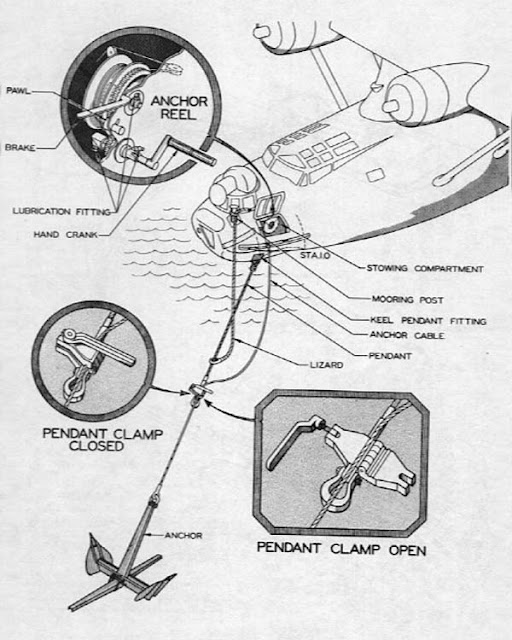Rev. 7-25-2024
After three years, definitely my favorite and sand and mud. Amazing for something that weighs little more than a jug of milk (10.6 pounds). In super-soft mud Fortress still rules.
No, I don't actually use the Wichard clip when anchoring; that was just for quick-changes during tests.
It may look a lot like the Lewmar Delta, but the performance is on a whole nuther' level, perhaps the best of the new generation anchors. I've just started testing, but my first impression is that this is probably the best anchor, at any price, for the Chesapeake Bay:
- Sets and resets seamlessly
- Holds well in mud. Not as good as Fortress, but better than anything else.
- It does NOT clog with sticks and sticky mud like roll bar anchors. This is a big win in the Chesapeake.
- Does well in hard sand.
- Aluminum. 8 pounds is all I need! But steel would be even better in some ways, so get steel unless ounces matter to you.
- Comes up clean, like a Delta. But it sets 4x faster and holds 2x better.
Before testing, I had not yet fitted a rode.
I like it!
Update, 7-11-2020
Rocks seem to be the Achilles heel of well, every anchor. I spent a number of days last week fishing some areas over jointed rock slabs with small pockets. The best anchors are those that present a sharp point straight down. Northill is quite good. Steel pivoting fluke anchors are surprisingly good. Everything else is terribly hit-or-miss and insecure with even the slightest shift. Very long scope is the rull, since ANY uplift will cause intimidate dragging.
Thus, my standard anchors will now be the Northill and the Excel. Both hold well in sand and mud, and the Northill will fill my fishing needs.
So where did the Northill design come from? They were used to anchor flying boats in WWII. Not this specific model. There was a light weight stainless version. But the same angles.


Where can you buy one in the US?
ReplyDeleteWe are full time cruisers in the PNW who live on the hook and got rid of our Rocna Vulcan 5 months ago (a fine anchor, but not perfect) for an Excel, and love it. A truly amazing anchor.
ReplyDeleteHere's an informative thread comparing the Delta to Excel that includes input from the dealer about the function of some of the details, such as the cutouts in the flukes- https://www.cruisersforum.com/forums/f118/comparing-design-of-delta-and-sarca-excel-anchors-230603.html
Drew, you say "8 lbs is all I need." Do I understand correctly that you're using their alloy #1 anchor, rated for up to a 5m boat and weighing 3.5kg? Even though you're on an 8m trimaran?
ReplyDeleteYes, and I've been told that the #2 is actually the right size for the boat. If I cruised a lot in exposed areas, I agree that is a more conservative choice. But I don't cruise much, I can always find a protected spot, and I also carry a Guardian G-11 which I can deploy in a V. That combination would give massive holding in the worst mud. Honestly, modern anchors hold so much better than what we started with 40 years ago, recommendations have become more and more conservative. Which is a good thing.
ReplyDeletehttps://4.bp.blogspot.com/-1DrjSRHI3BY/W5muZBZwXaI/AAAAAAAAO6I/TaLLiEgOSyMSFZjaX-7dtdYkUsIGbPpIwCLcBGAs/s1600/49a.%2Bboat%2Bmone%2Bwith%2BV%2Bnomenclature.pub.jpg
I'm also quite experienced with anchoring and know all the tricks. But yeah, a #2 would be the manufacturer recommended choice. That is what I would recommend to you.
Ground Tackle Marine is the only North American source that I know of.
ReplyDeleteI will be publishing an article in Practical Sailor on the Excel anchor at some point, I'm just waiting to get more experience with it. Unfortunately, that limits what I can post here.
ReplyDeleteThere are a number of differences, but the obvious two are the down turned nose (positive bite) and the rim on the edge. The rim prevents the loose soil from easily sliding off to the side, like a plow. In a sense, it is more like two scoop anchors, side by side at an angle. It also speeds initial engagement.
V-shaped soil anchors are well known in the construction industry. A shallow V can actually hold more than a flat plate or scoop, because it places more soil in compression. You will never find a scoop-shaped soil anchor.